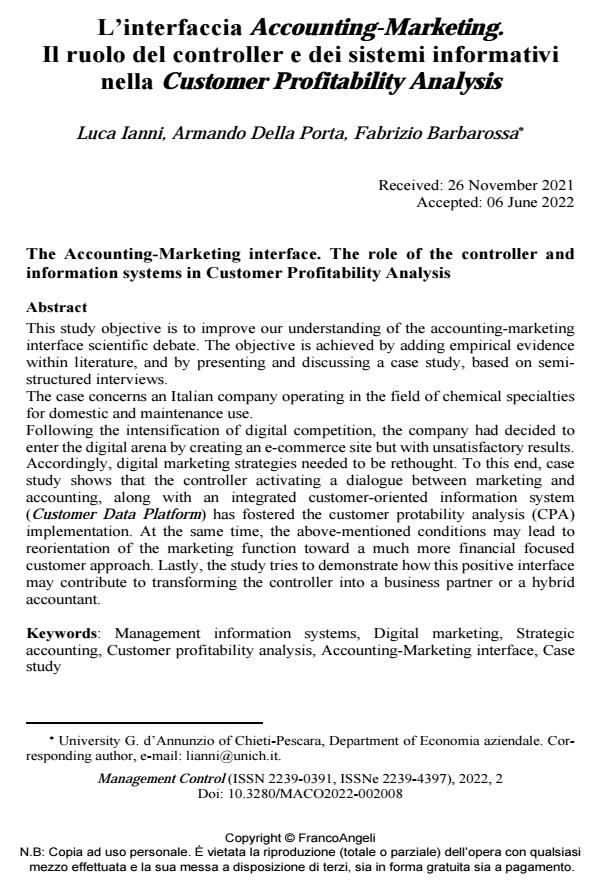The Accounting-Marketing interface. The role of the controller and information systems in Customer Profitability Analysis
Journal title MANAGEMENT CONTROL
Author/s Luca Ianni, Armando Della Porta, Fabrizio Barbarossa
Publishing Year 2022 Issue 2022/2
Language Italian Pages 26 P. 165-190 File size 294 KB
DOI 10.3280/MACO2022-002008
DOI is like a bar code for intellectual property: to have more infomation
click here
Below, you can see the article first page
If you want to buy this article in PDF format, you can do it, following the instructions to buy download credits

FrancoAngeli is member of Publishers International Linking Association, Inc (PILA), a not-for-profit association which run the CrossRef service enabling links to and from online scholarly content.
This study objective is to improve our understanding of the accounting-marketing interface scientific debate. The objective is achieved by adding empirical evidence within literature, and by presenting and discussing a case study, based on semi-structured interviews. The case concerns an Italian company operating in the field of chemical specialties for domestic and maintenance use. Following the intensification of digital competition, the company had decided to enter the digital arena by creating an e-commerce site but with unsatisfactory results. Accordingly, digital marketing strategies needed to be rethought. To this end, case study shows that the controller activating a dialogue between marketing and accounting, along with an integrated customer-oriented information system (Customer Data Platform) has fostered the customer protability analysis (CPA) implementation. At the same time, the above-mentioned conditions may lead to reorientation of the marketing function toward a much more financial focused customer approach. Lastly, the study tries to demonstrate how this positive interface may contribute to transforming the controller into a business partner or a hybrid accountant.
Keywords: Management information systems, Digital marketing, Strategic accounting, Customer profitability analysis, Accounting-Marketing interface, Case study
Luca Ianni, Armando Della Porta, Fabrizio Barbarossa, L’interfaccia Accounting-Marketing. Il ruolo del controller e dei sistemi informativi nella Customer Profitability Analysis in "MANAGEMENT CONTROL" 2/2022, pp 165-190, DOI: 10.3280/MACO2022-002008